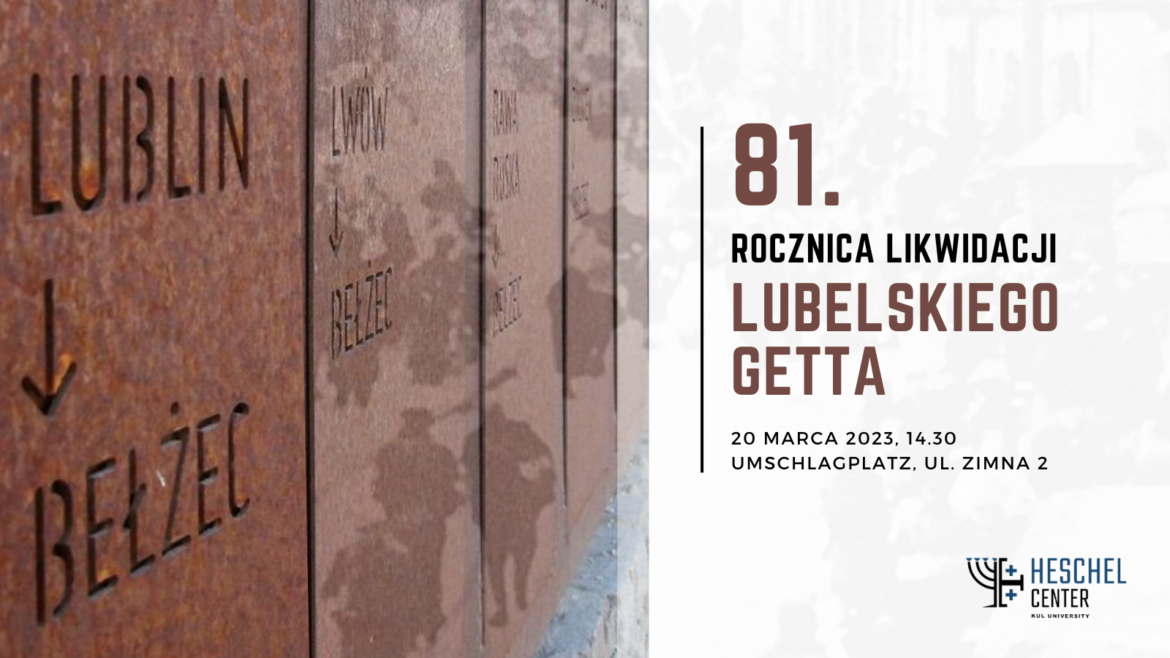On the 81st anniversary of the liquidation of the Lublin Ghetto, the Abraham J. Heschel Centre for Catholic-Jewish Relations of the Catholic University of Lublin (KUL) will commemorate its inhabitants who were murdered by the German Nazis. On Monday, 20 March, representatives of the Jewish and Catholic communities will pay tribute to the victims at the Umschlagplatz in Lublin.
Initially, the Lublin ghetto was inhabited by some 34,000 Jews. In March 1942, the German occupation authorities began liquidating the ghetto in Lublin’s Podzamcze district.
The commemoration ceremony is scheduled for 2.30 pm, at the Umschlagplatz, the place from which the German security police sent transports of Jews to the Bełżec death camp in March and April 1942.
The gathering will begin with a minute’s silence, after which flowers will be laid – an expression of remembrance for all those murdered. Afterwards, representatives of the Catholic and Jewish communities will say a prayer. On behalf of the Jewish community, this will be the cantor Symcha Keller, and on the part of the Catholic Church, the auxiliary bishop of the Lublin archdiocese, Mieczysław Cisło, long-time chairman of the Polish Bishops’ Conference Committee for Dialogue with Judaism.
The event will be attended by the Minister of Education and Science Przemysław Czarnek, the Vice-Chancellor of the Catholic University of Lublin for students, doctoral students and development, Dr Beata Piskorska, Professor of the Catholic University of Lublin, and the Director of the Abraham J. Heschel Centre for Catholic-Jewish Relations of the Catholic University of Lublin, Rev. Prof. Mirosław S. Wróbel.
The Lublin ghetto was established on 20 March 1941 by order of the Lublin Governor Ernst Zörner. Then it was moved to the Majdan Tatarski, its final liquidation was carried out on 9 November 1942. This was the beginning of the Operation “Reinhardt”, during which almost two million people, mainly of Jewish origin, were killed in a bestial manner.
Adrian Andrzejewski





